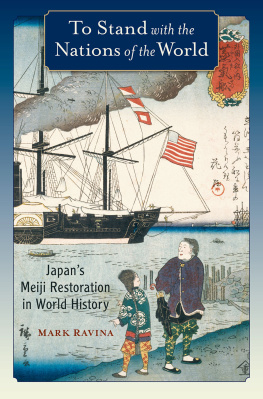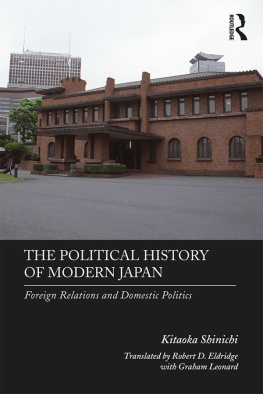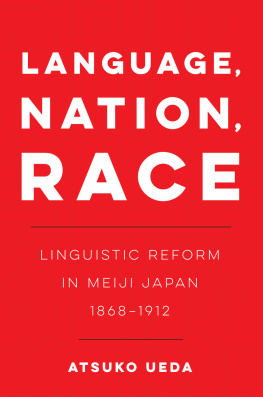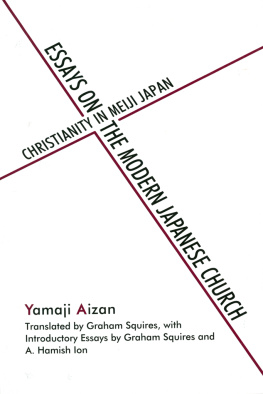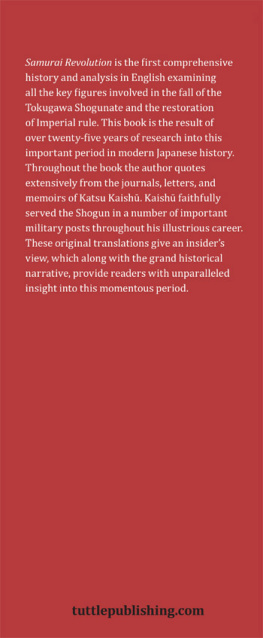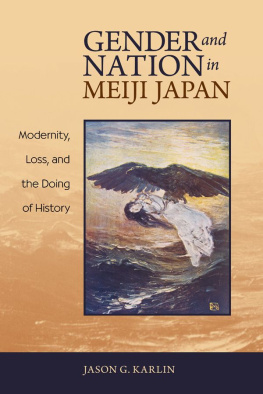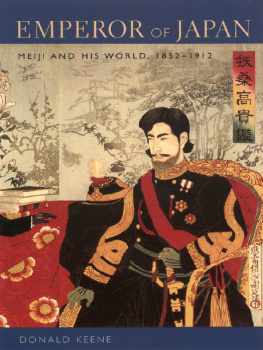To Stand with the Nations of the World

Oxford University Press is a department of the University of Oxford. It furthers the Universitys objective of excellence in research, scholarship, and education by publishing worldwide. Oxford is a registered trade mark of Oxford University
Press in the UK and certain other countries.
Published in the United States of America by Oxford University Press
198 Madison Avenue, New York, NY 10016, United States of America.
Oxford University Press 2017
All rights reserved. No part of this publication may be reproduced, stored in a retrieval system, or transmitted, in any form or by any means, without the prior permission in writing of Oxford University Press, or as expressly permitted by law, by license, or under terms agreed with the appropriate reproduction rights organization. Inquiries concerning reproduction outside the scope of the above should be sent to the Rights Department, Oxford University Press, at the address above.
You must not circulate this work in any other form and you must impose this same condition on any acquirer.
CIP data is on file at the Library of Congress
ISBN 9780195327717
eISBN 9780190656102
In memory of Hamano Kiyoshi
Contents
IN THE LONG course of writing this book I have benefited from the help of so many colleagues that a full accounting would itself amount to a short book. What follows is, therefore, a limited and selective list of those to whom I owe a particularly large intellectual debt.
In the early stages of this work, Mitani Hiroshi spent an afternoon guiding me through the Tokyo University Komaba bookstore, pointing out every must read work in Tokugawa and Meiji Japanese history. While I am still working through that list, it proved invaluable in navigating the enormous Japanese-language bibliography on the Meiji Restoration. In subsequent conversations, I benefited from Professor Mitanis insightful and creative approaches to historiography and methodology.
I first began exploring the Meiji Restoration as world history at a 2001 workshop on globalization sponsored by Emorys Halle Institute and hosted by Boazii University (Istanbul). In 2002, I presented two research papers, first at a conference on the teleologies of the nation-state at Princetons Institute for Advanced Study (IAS), and then at a conference on state-making at the University of Leiden. Those early thoughts on globalization appeared in conference volumes edited by Joshua Fogel and by Richard Boyd and Ngo Tak-Wing. I am thankful to the conference participants and the editors for their comments and insights. I owe special thanks to Josh Fogel for his support and advice over many years.
A Fulbright Senior Research Award allowed me an extended residence in Japan at the International Research Center for Japanese Studies (Nichibunken) in 2005 and 2006, where I learned much from Kasaya Kazuhiko in his seminar on early modern Japan. Kasayas graduate student Yokoyama Mitsuteru spent many hours helping me with handwritten manuscripts. My family joined me in Kyoto for the first half of that sabbatical and dutifully pulled me away from my desk for various adventures, including trips to Osaka, Kyasan, and Amanohashidate. Initially overwhelmed by family obligations, I briefly despaired that my progress reports to Fulbright might focus primarily on Kyotos little league baseball off-season training schedule and teen volleyball practices. My fears were unfounded and instead those experiences were not just delightful but revitalizing, helping me to appreciate Japan anew, and I returned to the classroom a better and more enthusiastic teacher. I offer my thanks to my wife Nora Levesque and our blended family for their love, support, good humor, and constant reminders of life beyond the printed page and computer screen.
From August through December 2011, the Institute for Research in the Humanities (Jinbunken) in Kyoto hosted me as a visiting professor, with additional support from a Japan Foundation Research Grant. I offer my deepest appreciation to the faculty and staff of the Institute for creating a glorious environment in which to explore and refine ideas. My sponsor, Iwaki Takauji, spent many hours guiding me through difficult manuscripts and fielding my many questions on Tokugawa social and political history. I benefited enormously from his erudition, graciousness, and generosity. I was invited to present my work-in-progress at the Institutes seminar series, where I received valuable comments from Takagi Hiroshi, Nara Kenji, Haga Yji, John Breen, and Hatakayama Kazuhiro. At other presentations in Kyoto and Tokyo I benefited from the comments of Neil Waters, James Baxter, Bruce Batten, Leonard Bluss, and Silvio Vita. My special thanks to Professor Vita for hosting a dinner with Iwakura Tomotada, history professor and great-great-grandson of Iwakura Tomomi. That evening of fine food, wine, and conversation was both delightful and enlightening. Matthew Stavros and Francesco Campagnola were wonderful lunch and dinner companions, who would listen to the messiest, protean ideas.
I benefited greatly from a series of conferences in 2014 and 2015, organized in anticipation of the Meiji Restoration sesquicentennial. My thanks to Rob Hellyer for arranging the meeting at Wake Forest and to Harald Feuss for two meetings at Heidelberg University. I learned much from the fellow participants at those sessions, especially Jong Chol An, Sven Saaler, Toru Takenaka, Hans Martin Kraemer, Fabian Drixler, and Kren Wigen. Thanks also to Ethan Segal, Luke Roberts, Aaron Skabelund, Yabuta Yutaka, and Fujita Teiichir for advice and support over the years.
My colleagues at Emory University have offered an invaluable mix of supportive comments and incisive criticism. I learned much from the fellow participants in an East Asian Studies faculty writing group (Julia Bullock, Sun-chul Kim, Maria Sibau, and Jenny Chio), who read drafts of many chapters. Their patient and exacting readings helped me to clarify my thinking at several key stages. Team-teaching an undergraduate East Asian history survey with Tonio Andrade has been an intellectual windfall. The multi-year, iterative process whereby Tonio and I gradually knitted our national history lectures into a transnational history of East Asia was both demanding and exhilarating. If our students learned as much in class as I did, they received a superb education. Team-teaching a graduate seminar in comparative empires with Clifton Crais helped me to situate the Meiji Restoration in a broader perspective. I hope this volume reflects how much I learned from both Clifton and the students in that class. Graduate students Stephanie Bryan and Tim Romans were extremely helpfulStephanie for refining and improving my maps, and Tim for enduring many drafts. When a family crisis threatened to derail my sabbatical at Jinbunken, Michael Elliot, then dean of faculty, responded with flexibility and magnanimity. At the Emory libraries, Lawrence Hamblin got obscure books on the shelf faster than I could have hoped or imagined, and the interlibrary loan staff supported my many unusual requests. Archivists and staff at the Toj Rekishikan and Library of Congress helped track down and get copies of rare prints and photographs.
Susan Ferber at Oxford University Press guided this project with patience and wisdom. In an era when most everything seems to be outsourced, it was a rare and great gift to get her thoughtful and judicious line edits. In pencil, no less! I am indebted to her steady editorial hand. Two readers for the Press offered valuable suggestions and saved me from errors of fact and interpretation.

